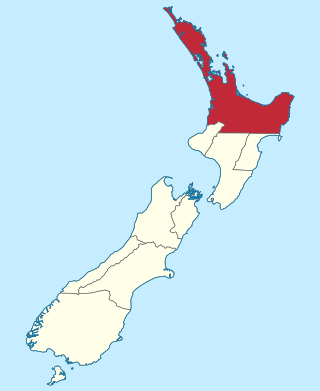Related Research Articles
Robert Hart was a 19th-century New Zealand politician.
Ashley was a New Zealand electorate situated north of Christchurch. It was in use from 1866 to 1902, and was replaced with the Hurunui electorate.

The Auckland Province was a province of New Zealand from 1853 until the abolition of provincial government in 1876.
Raglan is a former New Zealand parliamentary electorate. It existed for three periods between 1861 and 1996 and during that time, it was represented by 13 Members of Parliament.
Waitemata was a New Zealand parliamentary electorate, from 1871 to 1946, and then from 1954 to 1978. It was represented by 18 members of parliament.
Thames is a former New Zealand electorate, in the Thames-Coromandel District. It existed from 1871 to 1946.
Chalmers, originally Port Chalmers, was a parliamentary electorate in the Otago Region of New Zealand, from 1866 to 1938 with a break from 1896 to 1902. It was named after the town of Port Chalmers, the main port of Dunedin and Otago.

The 22nd New Zealand Parliament was a term of the New Zealand Parliament. Its composition was determined by the 1925 election, and it sat until the 1928 election.
The Southern Division was a New Zealand parliamentary electorate in the Auckland Province from 1853 to 1860. It was a large two-member electorate south of the town of Auckland.
Pensioner Settlements was a 19th-century parliamentary multi-member electorate in the Auckland region of New Zealand, from 1853 to 1870.
Northern Division was a two-member parliamentary electorate in the Auckland Region, New Zealand from 1853 to 1870.

Ebenezer Hamlin was a member of parliament in New Zealand, and an independent conservative.

William Thorne Buckland was a 19th-century Member of Parliament in New Zealand.
The 4th New Zealand Parliament was a term of the Parliament of New Zealand.
Joseph Newman was a 19th-century Member of Parliament in the Waikato, New Zealand.
Joseph May was a 19th-century Member of Parliament from the Auckland Region in New Zealand.
Henry Chamberlin, in many sources referred to as Chamberlain, was a member of the New Zealand Legislative Council. He came to New Zealand in his late 20s with a younger brother and a lot of capital, which he invested in land south and west of Auckland. After a failed attempt to win election to the House of Representatives in 1867, he was called to the Legislative Council in early 1869. He remained a member until his accidental drowning in 1888.

The Raglan by-election of 1927 was a by-election held in the Raglan electorate during the 22nd New Zealand Parliament, on 29 September 1927. It was caused by the death of incumbent MP Richard Bollard of the Reform Party. Despite being a local contest it quickly became a national contest in miniature due to growing discontent with the Reform Government.
The 1865 Raglan by-election was a by-election held on 19 April 1865 in the Raglan electorate during the 3rd New Zealand Parliament.
The 1867 Northern Division by-election was a by-election to the New Zealand House of Representatives, during the term of the 4th Parliament on 1 July. The Northern Division electorate was a mostly rural electorate in the northern Auckland region.
References
- ↑ Wilson, James Oakley (1985) [First ed. published 1913]. New Zealand Parliamentary Record, 1840–1984 (4th ed.). Wellington: V.R. Ward, Govt. Printer. p. 223. OCLC 154283103.
- ↑ "Election of Mr Farmer". Daily Southern Cross . Vol. XXIII, no. 3092. 14 June 1867. p. 5. Retrieved 2 January 2021.
- ↑ "Raglan Election". Daily Southern Cross . Vol. XXIII, no. 3071. 24 May 1867. p. 7. Retrieved 2 January 2021.